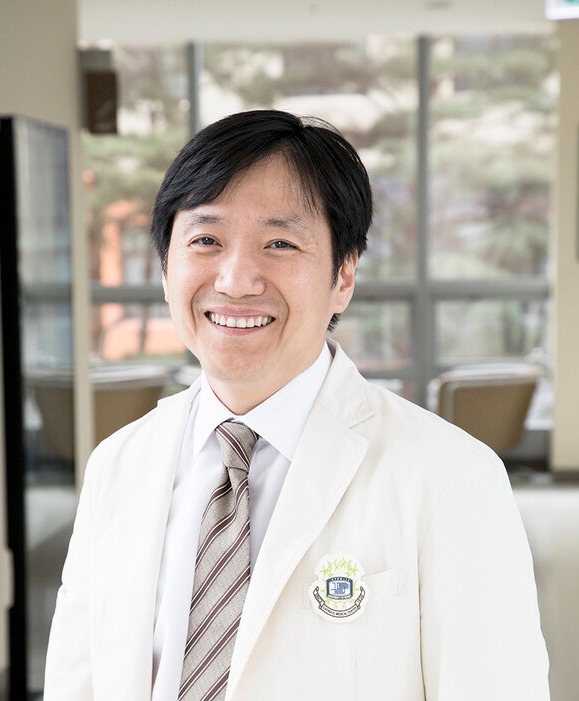The Catholic University of Korea, Seoul St. Mary's Hospital, and Stanford University School of Medicine in the United States have joined forces to develop a universal cell therapy based on hypoimmune-induced pluripotent stem cells (iPSCs) that minimize immune rejection.

Seoul St. Mary's Hospital announced on Tuesday that it will invest 7 billion won ($5 million) over three years starting this year to develop a cell therapy based on hypoimmune induced pluripotent stem cells through the “NiCE (Not-visible iPS Cell)” project, led by Professor Ju Ji-hyeon of the Department of Rheumatology.
The NiCE project aims to develop hypoimmune iPSC cell lines that are not recognized as foreign by the human immune system using CRISPR-Cas9 gene editing technology. It also seeks to produce cartilage cell and cardiac muscle cell therapies based on these cells, thereby connecting preclinical and clinical validation. The project involves participation from leading Korean and foreign institutions, including the Catholic University of Korea, Sungkyunkwan University, Daewoong Co., and Stanford University School of Medicine.
Seoul St. Mary's Hospital aims to establish the technological foundation for global commercialization of precision regenerative medicine by expanding the application scope of cell therapies, which were previously limited to “low-immune tissues,” including cartilage, to high-immune tissues like the heart.
Seoul St. Mary's Hospital is the first university hospital in Korea to possess all three capabilities: GMP-grade iPSC cell line production, preclinical efficacy evaluation, and clinical trial experience. Through the NiCE project, the hospital aims to further enhance the completeness of its end-to-end precision regenerative medicine platform.
Professor Ju, who has received approval for the first investigator-initiated clinical trial (IIT) of an iPSC-based cartilage cell therapy in Korea and completed patient administration, will oversee the clinical validation of cell therapies based on a low-immunogenicity iPSC platform and the development of immune tolerance induction strategies in this study. He plans to drive the global clinical entry and commercialization of the platform technology.
Stanford University School of Medicine Professor Joseph Wu, the U.S. principal investigator, is a world-renowned expert in iPSC-based cardiovascular cell differentiation and therapeutic development, and former president of the American Heart Association (AHA). He possesses exceptional expertise in global preclinical validation and the design of international regulatory response strategies.
Professor Wu's team aims to develop low-immunogenic iPSC-derived cardiomyocyte therapies in the form of spheroids and organoids through this project, and lead preclinical validation in the U.S. to demonstrate the potential of first-in-class cell therapies targeting highly immunogenic tissues.
In addition, the two institutions will jointly analyze the pathological mechanisms of fibrosis, inflammatory responses, and tissue engraftment rates that may occur after myocardial cell therapy transplantation, and will also verify a dual immune regulation strategy through the combined administration of immune regulatory cells.
The joint research between Korea and the U.S. is significant because it has developed a new therapeutic platform that overcomes immune rejection, which has been identified as the biggest limitation of stem cell-based therapies, according to Seoul St. Mary’s Hospital.
Existing allogeneic cell therapies have faced limitations in commercialization due to constraints on immune compatibility and high rates of rejection, while autologous cell therapies have been hindered by high costs and lengthy production periods, the hospital explained. In contrast, low-immunogenicity iPSC-based cells minimize immune differences between donors and recipients, enabling transplantation without the need for immunosuppressive agents, and offer the potential for repeated administration and universal application, making them a next-generation therapy that overcomes the limitations of existing cell therapies, it added.
The goal is not limited to the development of single-cell therapies but also aims to validate the potential of a multi-lineage platform applicable to various indications such as cartilage and myocardium, and to establish a model that connects the entire cycle of precision regenerative medicine—from technology, clinical development, to commercialization—through actual clinical trials. To achieve this, Seoul St. Mary's Hospital said it would integrate its cell processing facilities and clinical platform, while Stanford University will handle high-complexity functional evaluations and preclinical validation, jointly establishing a global clinical strategy that meets regulatory standards in both countries.
“This joint project between Korea and the U.S. is not just about developing a treatment, but a golden opportunity for the precision regenerative medicine technology of Seoul St. Mary’s Hospital, based on its research-oriented hospital, to become a global standard,” Professor Ju said. “We will complete a virtuous cycle that leads to cooperation and commercialization with global companies by advancing the technology platform and establishing a proven foundation that can be applied to patients in actual clinical settings.”
Related articles
- Seoul St. Mary’s Hospital names new President Lee Ji-youl
- Regenerative medicine trial approved for pharynx cancer and CMV retinitis
- Catholic University researchers identify strong link between bone fractures and mortality in multiple myeloma patients
- ToolGen licenses CRISPR gene editor to Korean startup for disease-resistant poultry and egg-made biologics

